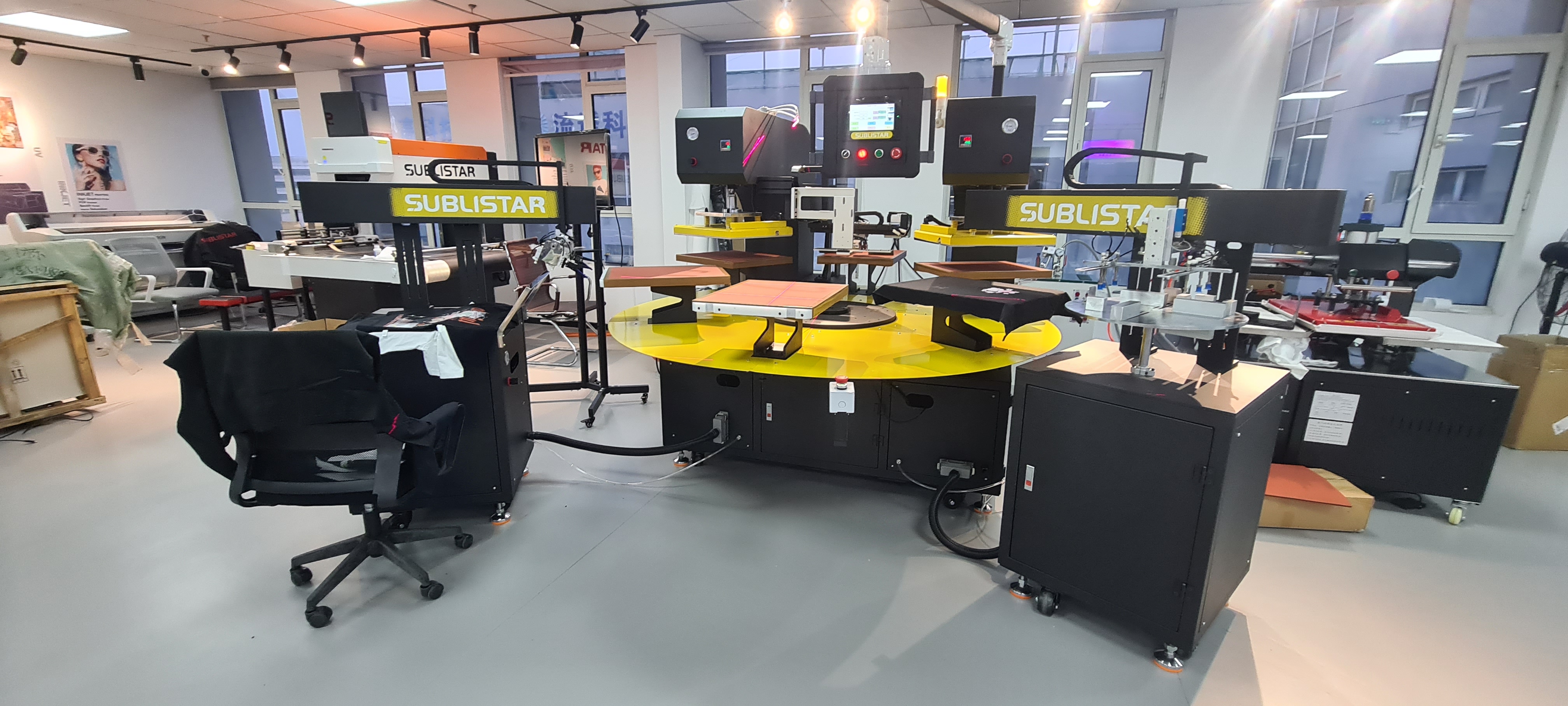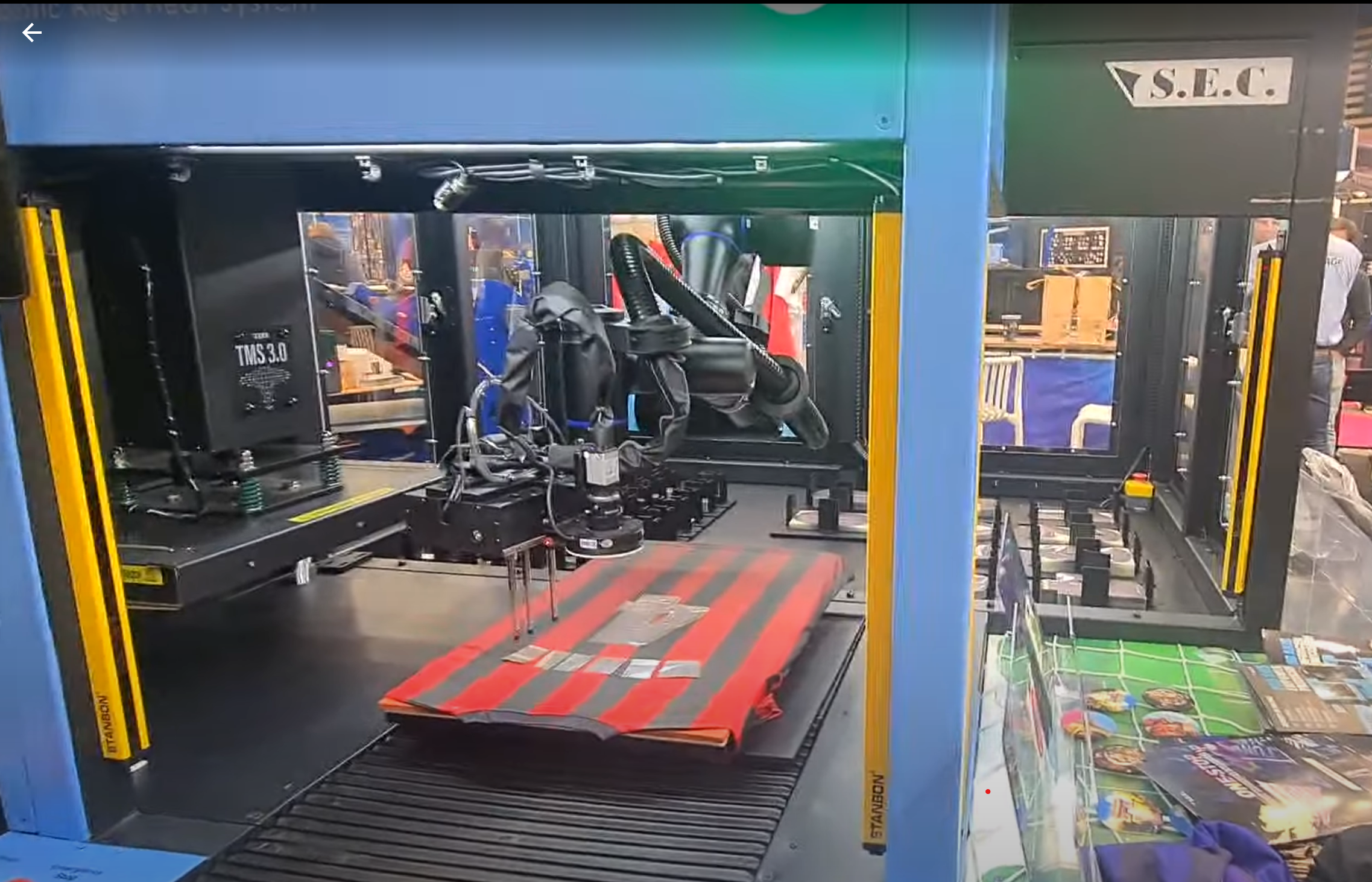Automation – An Essential Factor For Continued DTF Market Growth - Keypoint Intelligence
By David Sweetnam, Lab Director, Keypoint Intelligence
I continue to be amazed by the speed at which the Direct-to-Film (DTF) industry is evolving. Remember, this is an industry that has only really existed since Covid. In this short span of time, the DTF industry has transformed from what many considered as a ‘flash in the pan’ into a thriving, disruptive force—one that’s now consuming other sectors in its wake. Apparel companies are increasingly investing in robotics and artificial intelligence (AI) just to keep up.
Let’s rewind five years. Back then, a 2-head DTF device had a realistic operating speed of around 6-7m2/hr, or in practical terms, it could create up to around 100 full front 10" x 10" T-shirt designs per hour. The process of transferring cured printed films to garment blanks was entirely manual, taking at best around 30-40 seconds per T-shirt. That included film cutting, blank loading, a pre-press, film placement, a 12-15 second image transfer press, film peel, a final short press and unloading. So, a single skilled operator could process around 90-120 T-shirts per hour, roughly in line with the printer’s speed.
Fast forward to today’s market, and things are very different. We now have devices with 6, 8, or 12 printheads that can generate 20/30/40m2/hr, equating to 400-600+ full-front design prints per hour, with inline XY cutting units to process each design panel for final image transfer. At these speeds, you would need a team of operators just to keep up with the production capabilities of one device, driving up overheads costs and eating into the net profit margin.
Now imagine being able to manage these high-volume DTF systems with just one operator.
Enter Automation
If you’ve attended a trade show recently, you probably saw automated heat press carousels littered the show floor, drawing a sizable crowd. They resemble the rotary screen presses that have dominated garment decorator print shops for decades. In essence, they all operate fundamentally in the same way: the garment blank is manually loaded, a quick prepress is applied, and a robotic arm with suction fingers picks up the cut film and places it on the garment. Multiple concurrent heat press stations then apply the required cumulative image transfer heat/pressure. A second robotic system, equipped with a garment clamp and pinch fingers, then grips and peels off the film, after which a final press is conducted and the garment is unloaded either by the same operator or a third robotic arm.
The sophistication (and cost) of these devices varies widely. The factor limiting maximum capacity on most carousel devices is the image transfer stage. Most DTF films require a heat press around 12 seconds, which, with a dual heat press station breaks down at about 6-7 seconds per station, resulting in a max volume per hour around the 420-500 garments per hour.
At FESPA, Roq introduced its new Impress series device with three transfer stations. For hot peel workflows, each station can be set to heat—reducing station time and raising productivity rates. Interestingly, the third heat press can also be set to chill, quickly cooling the film for cold peel applications. To aid robotic arm set up, the device includes laser markers that show exactly where the film leading edge it going to be placed. It also includes a robotic unload and fold station, further reducing manual interaction.

Roq's new Impress automation machine with 3 heat presses
Some automation carousels, like the system developed by Chinese manufacturer Sublistar, can apply multiple films to the garment in a single carousel cycle. This opens up possibilities to create, for example, a T-shirt with a main front design and pocket logo. The separate cut films are picked in a single step using the robotic arm with adjustable vacuum pick fingers, with the film loading bay possessing multiple collection areas. Throughput speeds are, of course, affected due to the peel-off station needing more time to reposition the single robotic arm multiple times to remove each film. Portuguese manufacturer Acosgraf has removed this productivity limitation by including dual film peel robotic arms on its Columbia carousel system.

Sublistar's Smart Carousel Automation System
Vietnam-based S.E.C Group has gone a step further. It has an automation solution that allows entirely personalised garments to be created, with 0-9 and A-Z cut films all available to pick. A computer system designs the garment and instructs the robotic arm accordingly on what film element to pick and where to place it. A typical application for this device is the creation of high-value personalised sportswear.

Sports shirts being personalised with the S.E.C Pro Axis system
The phase that still requires a ‘human touch’ continues to be the garment loading—an involved and dextrous activity that robotics are not well suited to. While commercially viable automated garment-loading technology may still be some time off, Acosgraf showcased new technology at FESPA. Its Columbia system features a robotic arm, allowing it to load individual clothing panels (up to 1m x 1.5m) onto a platen. Multiple panel manufacturing still makes up much of the world’s clothing production with panels sewn together to create a final garment. Acosgraf claims the most challenging piece of this new technology is the picking of a single panel without disturbing the panel below, so they stay flat for perfect flat loading.
Acosgraf's Columbia carousel system with pre-launch garment panel loading option
Let’s not forget—we’re still the infancy of DTF automation. Some companies I’ve spoken to envisage a future where fully dark factories can operate 24/7 with zero human interaction, with the entire process from printed film to packaged and labelled final garment being carried out using technology. AI will be key to this future vision: it will monitor every step of the automated process from the handling of job ticketing, quality control, and maintenance of the printer, supplies and stock management and—crucially—recognising when the human touch is required.
For those worried about being replaced by technology, it’s worth noting a common message in my conversations with buyers: this isn’t about reducing workforce numbers. It’s about looking at ways of using their skilled workforce for higher profit margin tasks that are outside the remit of robotics.
The market is evolving rapidly. The next few years will see huge changes with automation quickly becoming essential. Manufacturers, resellers, and buyers alike will need to stay sharp and keep up with market trends or risk being left behind.
For more information contact David.sweetnam@keypointintelligence.com

About Keypoint Intelligence
Keypoint Intelligence is a global leader and authoritative provider of test-based analytical information, market intelligence and sales enablement to the digital imaging and print industry. Along with providing clients access to a range of SaaS tools and platforms, Keypoint offers the most comprehensive independent research and data in the industry.
